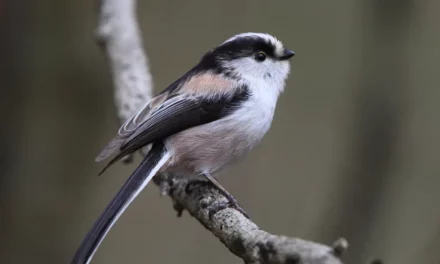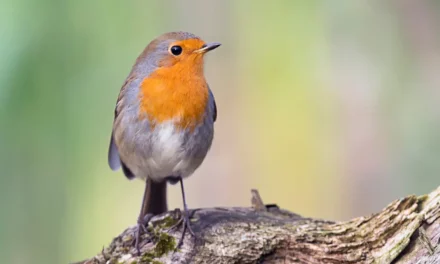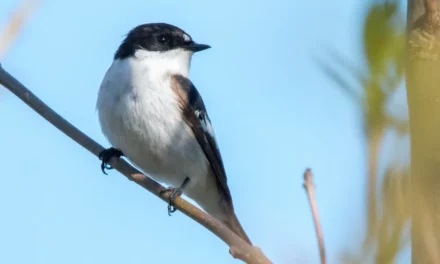What does the Common Nightingale look like?
The Common Nightingale is a small songbird with a light brown head and distinctive black eyes surrounded by a clear eye-ring. Its upper body is a uniform light brown color, blending perfectly into its surroundings. The tail is a striking russet shade, providing a splash of warm color, while the underside of the bird is a soft beige. These features make it both subtle and elegant, a true emblem of its natural habitat.
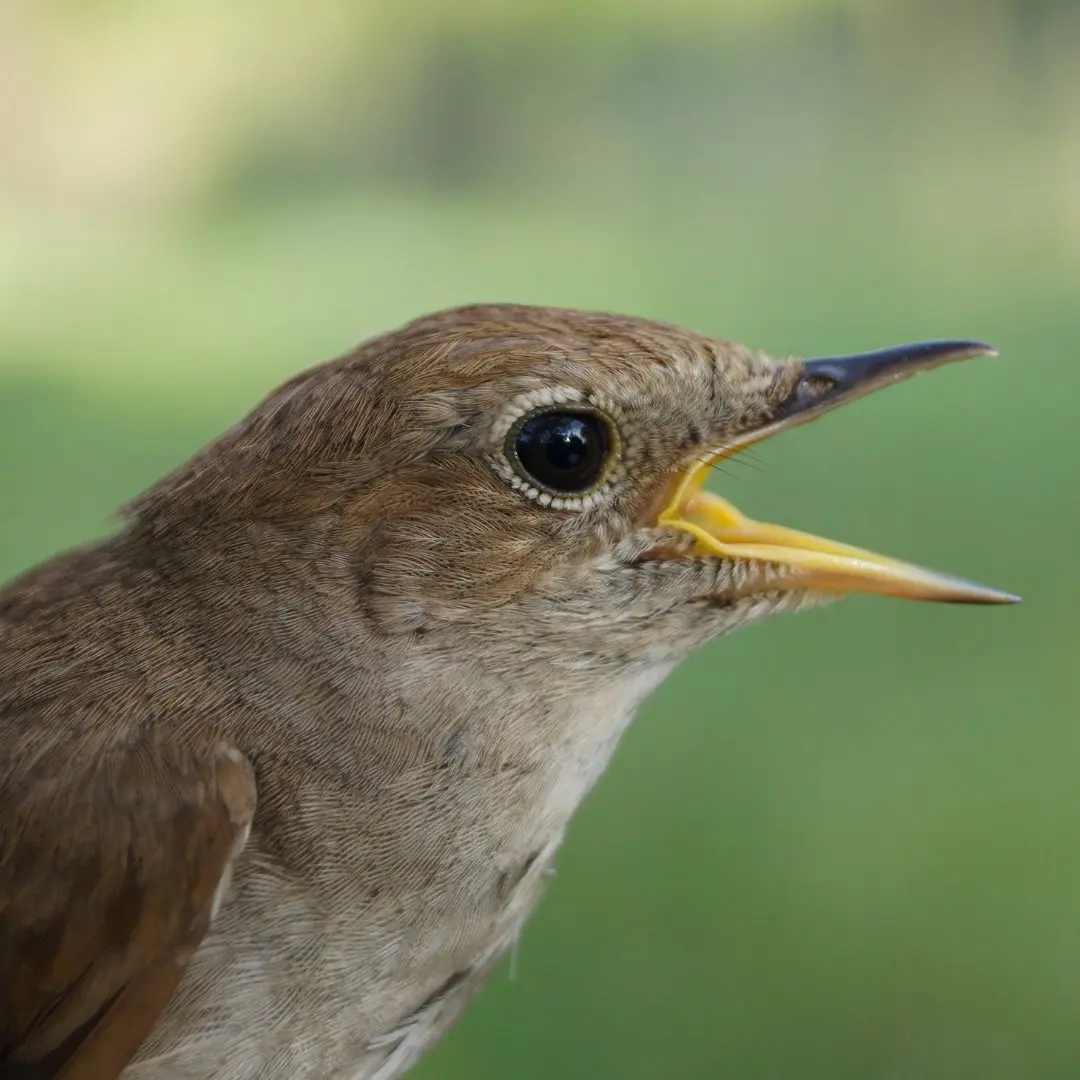
How does the Common Nightingale behave?
The behavior of the Common Nightingale is as discreet as its appearance. It often hides in dense bushes, making it challenging to spot. Despite its secretive nature, the bird is frequently noticed for its remarkable song, which often gives away its presence. Its ability to stay concealed adds an air of mystery to its reputation.
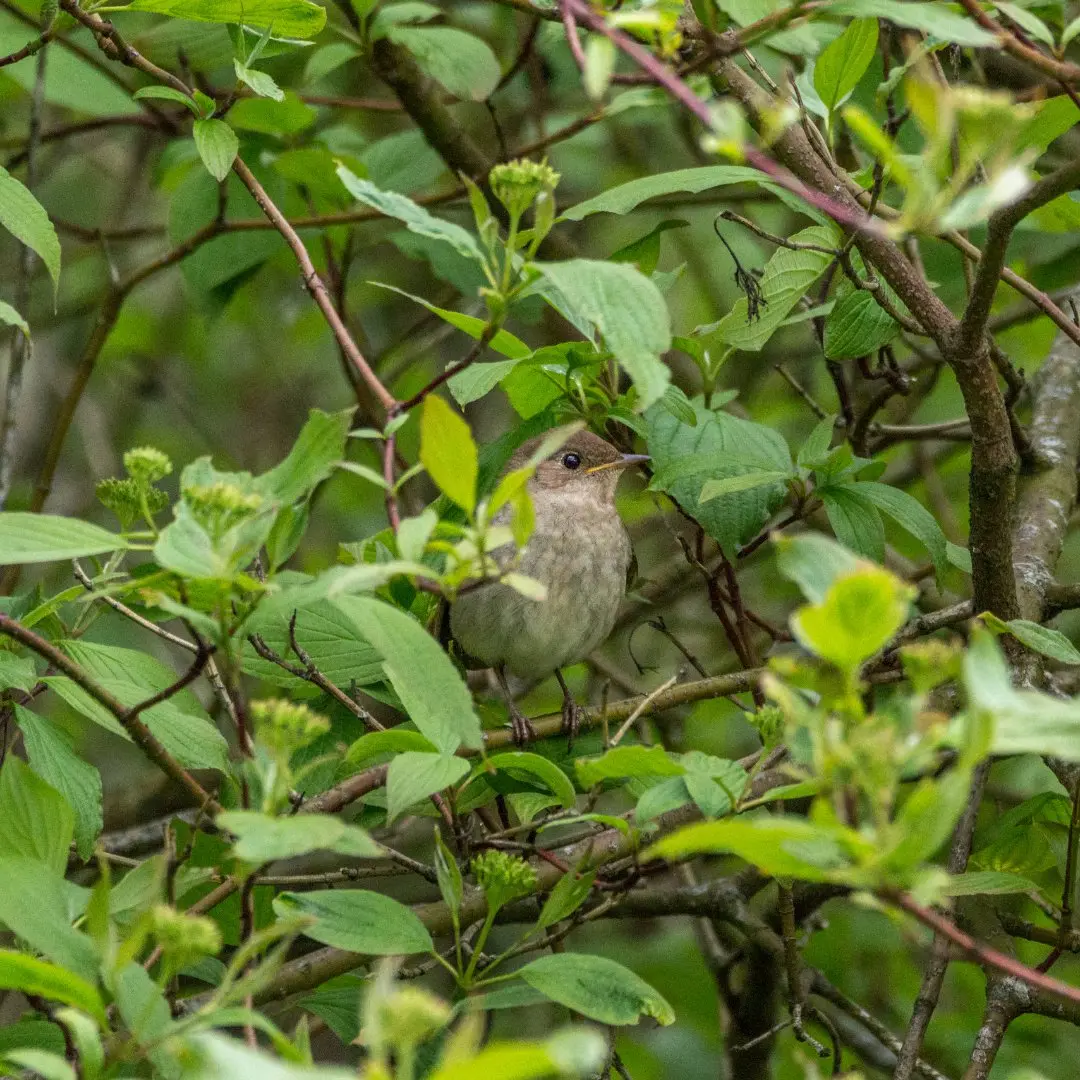
The songs and calls of the Common Nightingale
The male nightingale begins singing during its migration to breeding grounds. Upon arrival, its singing becomes intense as it seeks to attract a female. The song is powerful, carrying over a kilometer in distance, and features long, varied trills with occasional fluted notes. This unpredictable and virtuoso performance often leads to dusk-time duels with other males that can last late into the night. Once a mate is secured, the song’s purpose shifts to defending its territory. The nightingale also has distinct calls, including a whistled “huit” and a grating “grrouik.”
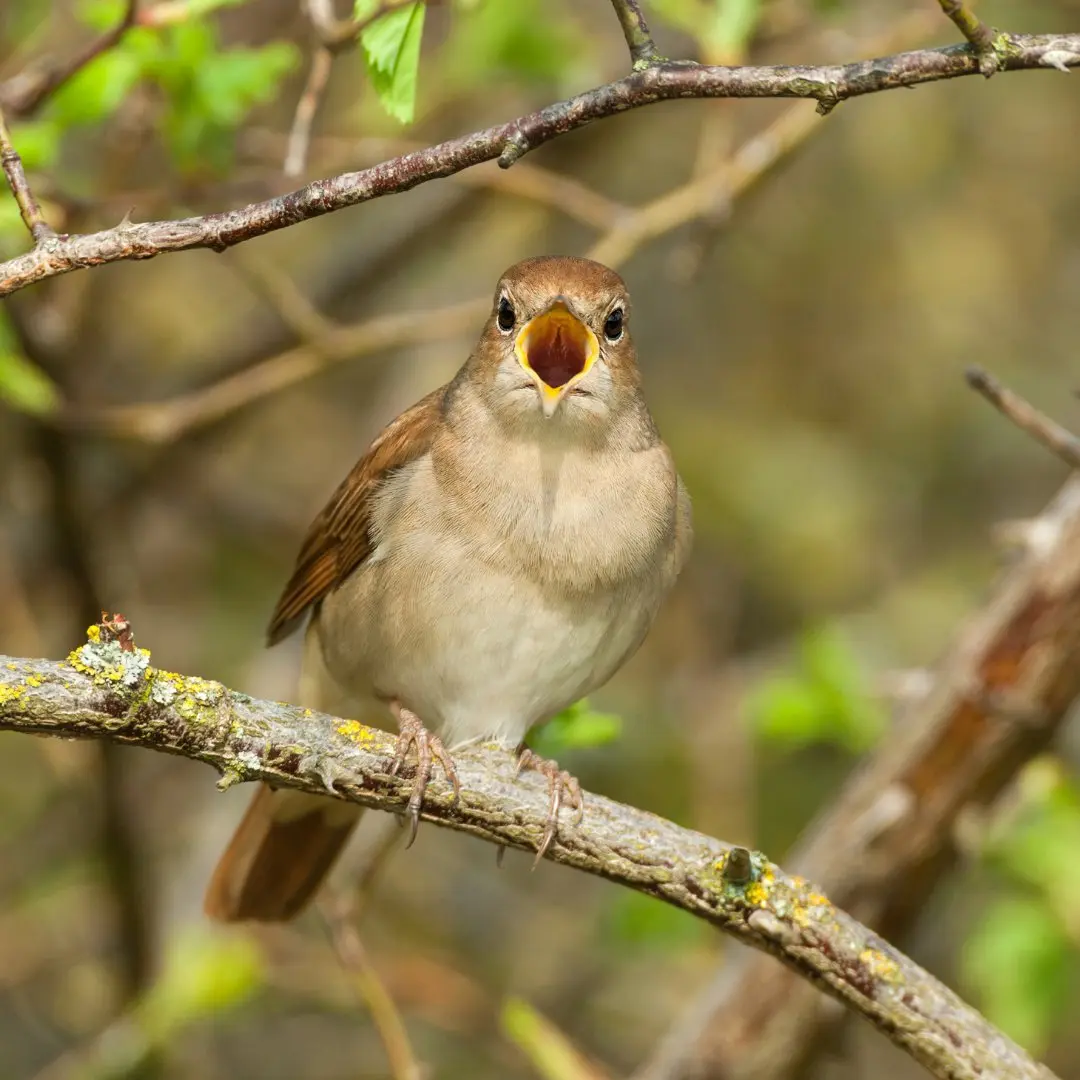
Reproduction of the Common Nightingale
The female nightingale selects her mate based on his vocal performance during singing duels. Breeding season occurs from May to July, during which the bird produces a single brood of 4 to 6 olive-green or plain dark-brown eggs. Nests, crafted from twigs and leaves, are often concealed under bushes or within thickets, ensuring protection for the offspring.
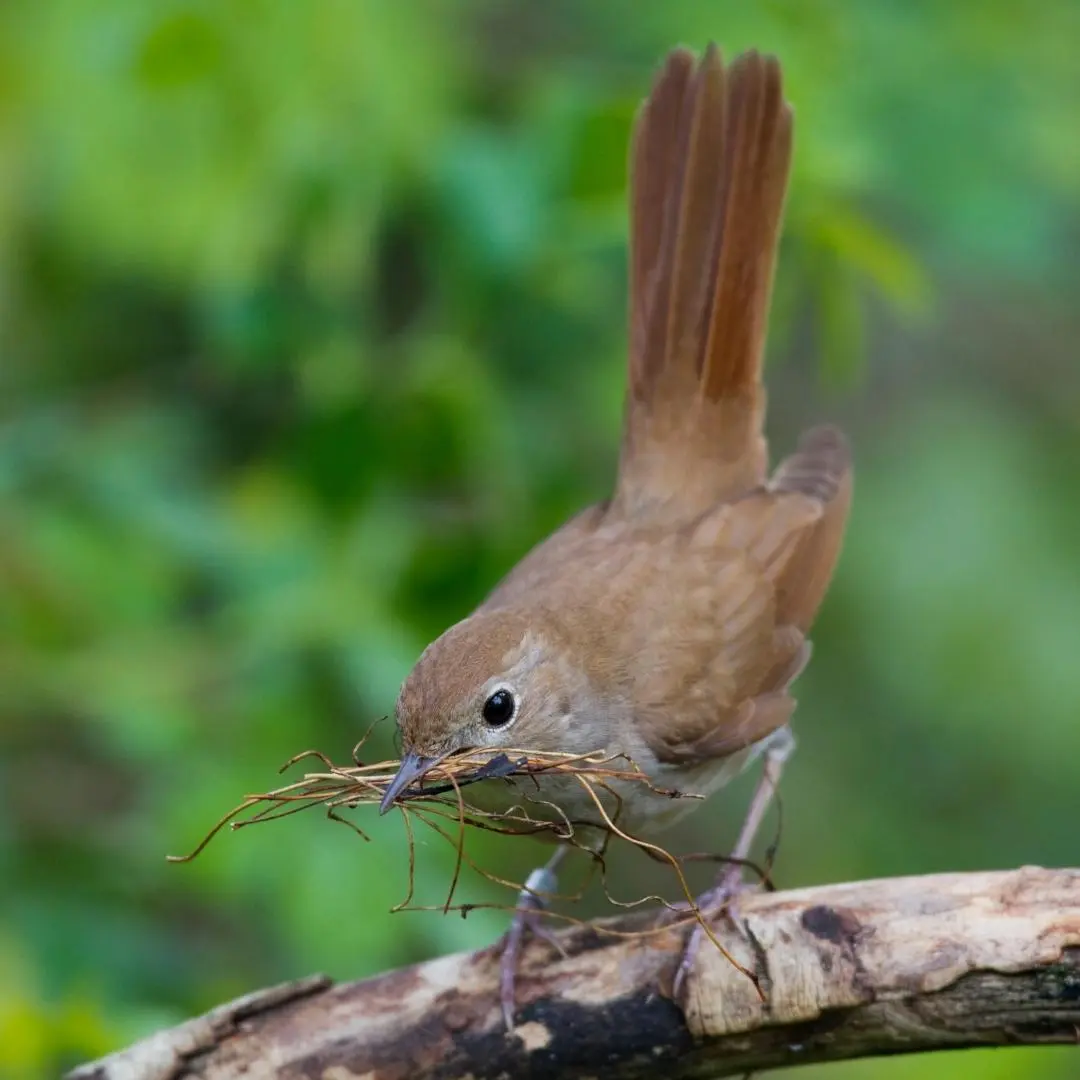
What does the Common Nightingale eat?
The Common Nightingale’s diet consists of a variety of small insects, spiders, and larvae, as well as berries. This diverse diet ensures the bird’s health and energy, particularly during its long migratory journeys.
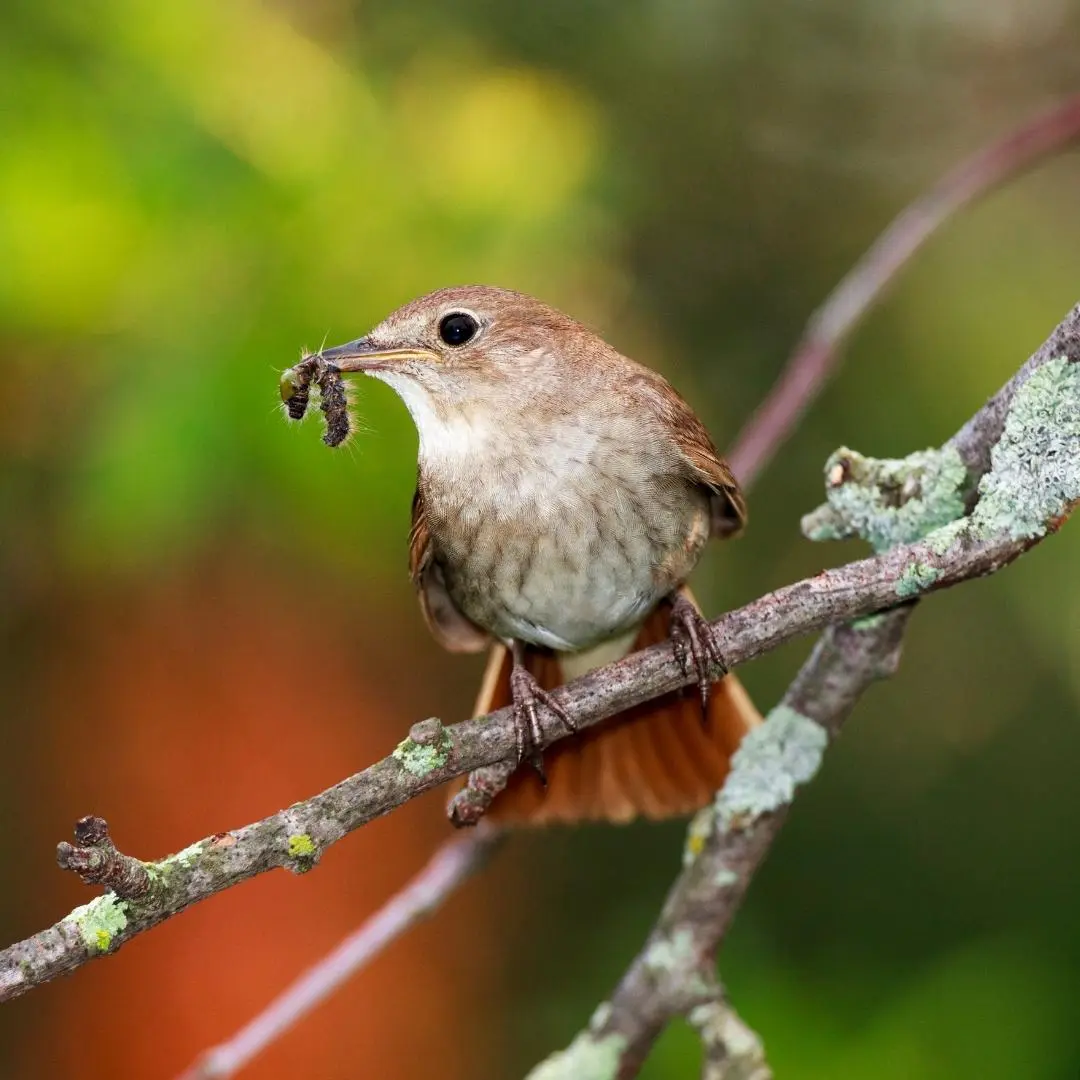
Where to find the Common Nightingale
The Common Nightingale prefers forested areas, often close to water sources. It can also thrive in parks and gardens, particularly those with dense shrubbery. As a long-distance migrant, it leaves Europe in September to winter in sub-Saharan Africa, returning in spring for the breeding season.
.webp)
-


